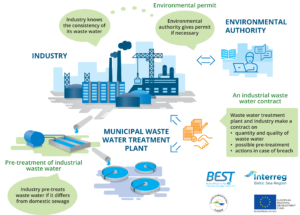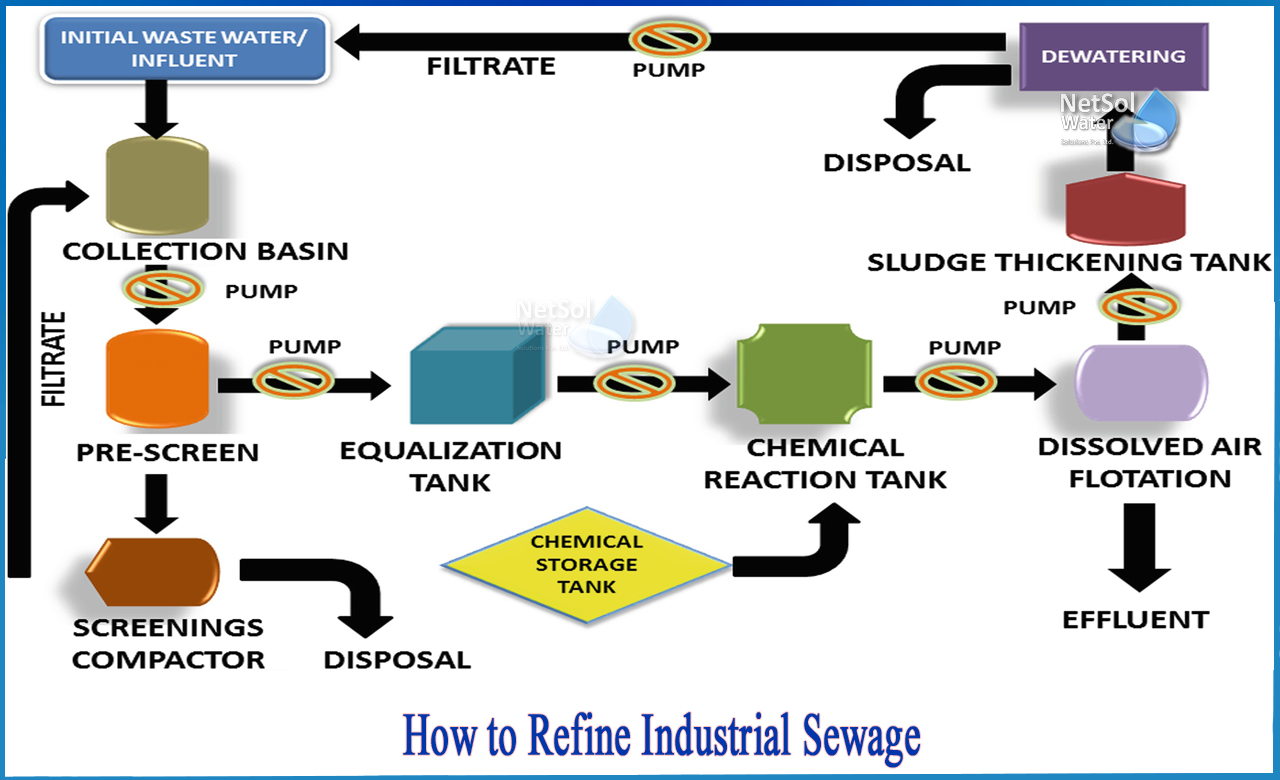Industrial Waste Water Treatment-- Customized Solutions for Effective Wastewater Treatment
Industrial Waste Water Treatment-- Customized Solutions for Effective Wastewater Treatment
Blog Article
Trick Methods in Hazardous Waste Water Treatment Procedures
The treatment of industrial wastewater is a vital facet of environmental monitoring, involving an array of strategies created to mitigate the impact of pollutants. Innovations in modern technologies such as membrane purification and advanced oxidation processes use innovative services for boosting treatment efficiency.
Physical Treatment Approaches
Just how effectively can physical treatment approaches address the complexities of commercial wastewater? Physical therapy approaches play a pivotal duty in the initial phases of wastewater administration, focusing primarily on the elimination of solids and big particulates. Methods such as flotation protection, filtering, and sedimentation are necessary for reducing the focus of put on hold solids, thereby enhancing the performance of succeeding treatment processes.
Sedimentation involves the gravitational settling of solids, allowing for the separation of much heavier products from the wastewater. This technique is particularly efficient in making clear water prior to organic or chemical treatments.
In addition, flotation approaches, which utilize air bubbles to lift put on hold solids to the surface for elimination, are effective in dealing with wastewater with high concentrations of fats, oils, and greases. Generally, physical treatment approaches offer as a vital initial action in the thorough administration of commercial wastewater, guaranteeing that the tons on succeeding treatment stages is reduced and improving general treatment efficiency.
Chemical Therapy Methods
While physical therapy approaches prepared for effective wastewater administration, chemical treatment techniques are vital for resolving the much more intricate impurities usually discovered in industrial effluents. These techniques make use of numerous chemical representatives to precipitate, reduce the effects of, or oxidize harmful materials, making certain a more extensive removal of contaminants.
One typical strategy is coagulation and flocculation, where chemical coagulants such as aluminum sulfate or ferric chloride are added to promote the aggregation of put on hold particles. This procedure enhances solid-liquid separation, reducing turbidity and enhancing water top quality. Furthermore, neutralization processes are used to change the pH of wastewater, using bases or acids to reduce the effects of acidic or alkaline streams, specifically.
Oxidation-reduction reactions play a critical function in derogatory natural pollutants and microorganisms. Chemical oxidants like ozone, chlorine, or hydrogen peroxide are used to break down intricate natural substances, making them less dangerous or extra biodegradable. In addition, progressed oxidation procedures (AOPs) combine several oxidation methods to enhance toxin elimination efficiency.
Biological Therapy Processes
The performance of wastewater treatment is significantly boosted by biological therapy processes, which harness the natural metabolic activities of microbes to decay organic matter and eliminate toxins. Industrial Waste Water Treatment. These procedures primarily involve anaerobic and cardiovascular food digestion, each customized for particular sorts of wastewater
Aerobic treatment processes make use of oxygen to support microbial growth, advertising the failure of natural toxins into carbon dioxide and water. Typical approaches include turned on sludge systems, where oygenation containers promote the mixing of wastewater with microorganisms, and trickling filters, which urge biofilm advancement on media surfaces.
Conversely, anaerobic therapy procedures occur in the lack of oxygen, using anaerobic bacteria to decompose raw material, causing biogas production, a renewable resource source. Anaerobic digesters are typically employed in commercial settings for this objective, efficiently reducing the quantity of sludge while generating beneficial biogas.
The choice of an organic treatment approach depends upon wastewater characteristics, therapy goals, and governing criteria. The integration of organic processes in wastewater therapy not just improves toxin removal performance however additionally promotes sustainability by decreasing chemical usage and sustaining source healing.
Advanced Oxidation Processes

Usual AOP methods include Fenton's ozonation, reagent, and photocatalysis. Fenton's reagent, a combination of hydrogen peroxide and ferrous iron, militarizes the formation of hydroxyl radicals, making it efficient for treating wastewater consisting of phenolic compounds and various other recalcitrant compounds. Ozonation utilizes ozone as a powerful oxidant, with the ability of breaking down a wide variety of organic contaminants while simultaneously sanitizing the effluent. Photocatalysis uses light-activated drivers, such weblink as titanium dioxide, to boost oxidation responses and remove contaminants.
AOPs use a number of advantages, consisting of decreased sludge manufacturing and the capacity to deal with wastewater with high concentrations of organic contaminants. Nonetheless, the execution of AOPs requires careful consideration of functional criteria and cost-effectiveness, making sure that these innovative techniques are appropriately integrated into existing wastewater treatment systems.
Membrane Layer Purification Technologies

Microfiltration works for getting rid of put on hold solids and bacteria, while ultrafiltration targets smaller sized natural particles and viruses. Nanofiltration connects the space in between ultrafiltration and reverse osmosis, successfully removing natural substances and divalent ions. Reverse osmosis provides the greatest degree of purification, used mainly for desalination and removing mono-valent ions.
Membrane technologies additional reading offer many advantages, consisting of low power intake compared to conventional treatment approaches, modular layout for scalability, and the potential for water recuperation and reuse. However, challenges such as membrane layer fouling and the requirement for routine upkeep need to be addressed to guarantee system efficacy. Overall, membrane layer filtering technologies stand for a vital element of contemporary commercial wastewater click here for info treatment techniques, promoting sustainability and resource conservation in water monitoring.
Final Thought
To conclude, commercial wastewater therapy utilizes a diverse selection of methods, consisting of physical, chemical, organic, and advanced techniques. Each technique plays an essential function in successfully resolving various impurities, enhancing water top quality, and advertising resource sustainability. The combination of these techniques promotes a thorough therapy technique, guaranteeing that industrial effluents satisfy regulatory criteria while minimizing environmental impact. Proceeded developments in these techniques will certainly additionally boost the performance and performance of wastewater treatment procedures in industrial settings.
The treatment of industrial wastewater is a critical aspect of environmental management, entailing a range of techniques created to mitigate the impact of pollutants.Just how efficiently can physical treatment methods deal with the complexities of commercial wastewater?Advanced oxidation procedures (AOPs) represent a cutting-edge strategy in commercial wastewater treatment, developed to successfully weaken organic contaminants that are often immune to traditional treatment approaches (Industrial Waste Water Treatment).In verdict, commercial wastewater therapy utilizes a varied array of methods, including physical, chemical, organic, and advanced methods. Proceeded innovations in these methodologies will even more improve the effectiveness and effectiveness of wastewater treatment procedures in commercial setups
Report this page